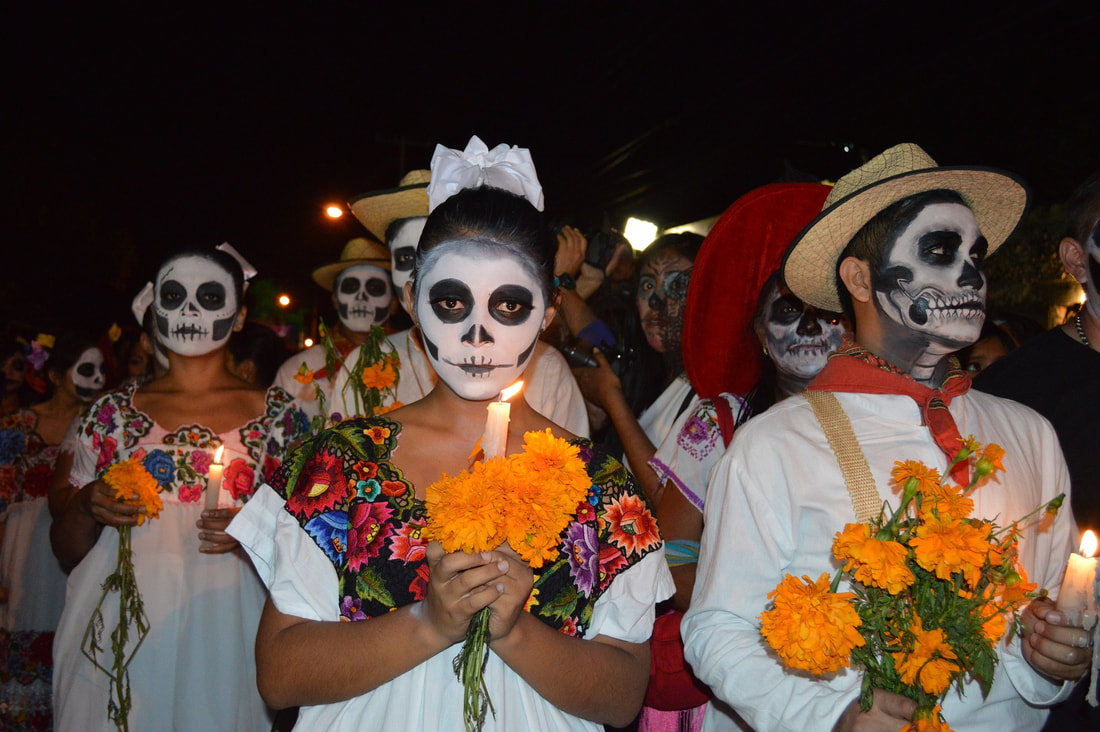|
Dia de los Muertos is an iconic Mexican celebration to honor those who have died. Sugar skulls, flowers, candy, and music are associated with the observances. With similarities to Halloween, it has become seen in the United States as a continuation of the Halloween festivities, especially as Dia de los Muertos falls on November 1st and 2nd. However, it is a separate and distinct celebration that originates in Aztec practices dating to the time before Spanish conquest and colonization of Mexico in the 16th century. So where did this celebration come from and how has it changed in the modern world? The Aztec Empire originated the celebration of Dia de los Muertos in recorded history. Between 1325 and 1519, the Aztec Empire flourished in the Mexican valley. As a polytheistic society, they had many gods and goddesses that they honored throughout the year. Mictecacihuatl was the Aztec goddess of death and her celebration was held from the end of the Gregorian month of August through July (LAPD). The festivities were designed to honor the dead by leaving offerings such as fruit, candy, and flowers. Music was also a major practice that extended over into modern times. Death was regarded differently in the Aztec belief system as something inevitable rather than something to be feared and avoid for as long as possible. The music and other such remembrance practices helped remove the morbidity surrounding death and instead honored the lives of the dead and ancestors. In addition to being a way to honor the dead, the celebration also marked the seasonal transition for summer to autumn and was a sort of harvest festival. It was the change from light to dark ( News Arizona). It could be viewed as a parallel practice to that of the Autumn Equinox, where the days start to become shorter and the world begins to move towards autumn and winter. However, once the Spanish conquistadors arrived, the timing of the festival changed drastically. In order to align more with Catholic holidays, the Spanish colonizers moved the celebrations to November 1st and 2nd. These dates were the holidays of All Saints Day and All Souls’ Day, respectively. The original month-long celebrations were condensed down to two days and was no longer a transitional celebration but continued as a time to honor those who had passed. In current day practices, many aspects of the original traditions remain. Offerings are a significant part of the remembrances, called offrendas. Instead of using actual skulls, sugar skulls are decorated and placed on the graves. Additionally, families clean the graves of loved ones and create altars to honor them. November 1st is traditionally a day to honor the lives of children who died prematurely while the 2nd is more of a broad celebration of life and embracing the inevitability of death (LAPD). Dia de los Muertos continues to be an important celebration in Mexican culture and tradition to honor the lives of the dead. It is crucial to note that this celebration is in no way related to the holiday of Halloween which originated with the pre-Christian celebration of Samhain and should not be confused. It has become increasingly popular to dress up as skeletons with Hispanic flourishes and say that the costume is a “Dia de los Muertos” costume. While there is a tradition of donning traditional Mexican garb and painting faces as skulls or wearing masks, it’s distinctive from Halloween and the two should be separated as the history, culture, and origins of the two are extremely different. - Kate Howard
0 Comments
Your comment will be posted after it is approved.
Leave a Reply. |
Adult News & reviewsLibrary news, info about upcoming events, reviews of books and films, and a look at the topics that affect us as a library. Archives
July 2023
|
General |
Borrowing |
About |


 RSS Feed
RSS Feed
